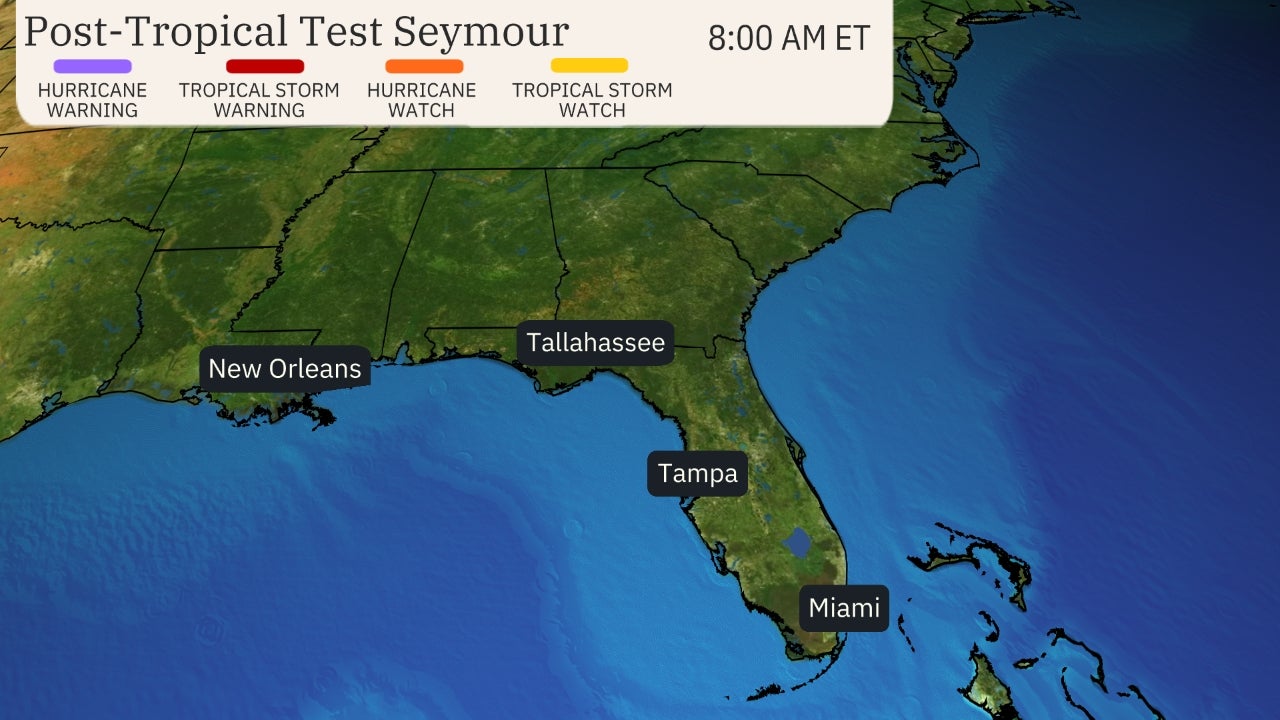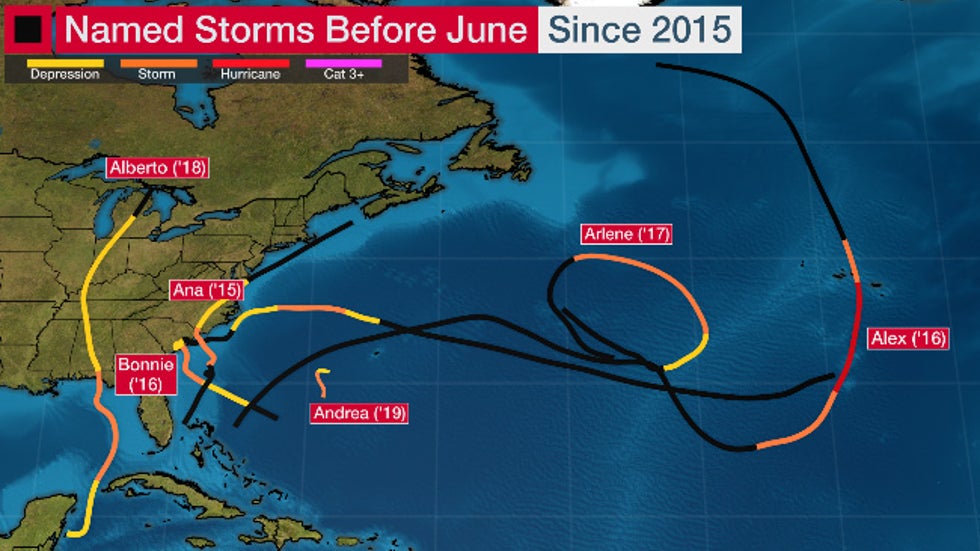Tropical Storm Arthur is passing near eastern North Carolina where it will bring rain and gusty winds on Monday.
Arthur is centered over 100 miles south-southwest of Cape Hatteras, North Carolina, and is moving to the north-northeast.
 Current Radar, Satellite and Winds
Current Radar, Satellite and WindsThe tropical storm will make its closest approach to the Outer Banks during the day on Monday. By Tuesday, the National Hurricane Center forecasts Arthur to transition into a non-tropical low-pressure system as it moves away from the East Coast.
 Current Info and Projected Path
Current Info and Projected PathA tropical storm warning has been issued for portions of eastern North Carolina from Surf City to Duck, including Pamlico and Albemarle sounds. This means winds over 39 mph are possible in eastern North Carolina on Monday. The winds could break some tree limbs or cause isolated power outages.
Cherry Point Naval Air Station in southeast North Carolina clocked a wind gust up to 39 mph early Monday morning.
 Tropical Storm Warning
Tropical Storm WarningRainfall could total 1 to 3 inches in eastern North Carolina through Monday, with locally higher amounts up to 5 inches possible. Some bands of rain and gusty winds from Arthur will reach as far north as the Virginia Tidewater. Localized flash flooding cannot be ruled out in these areas.
Arthur will also generate swells along the Southeast and mid-Atlantic coasts the next few days. That will result in life-threatening surf and rip currents in these areas, and beachgoers are advised to stay out of the ocean.
Minor flooding from storm surge is possible in low-lying areas of eastern North Carolina.
Preseason Storms Have Been Common Lately
Arthur is another example of how storms can sometimes form before the hurricane season officially begins on June 1. This is the sixth straight hurricane season that has started early.
Since 2015, at least one named storm has developed before June 1 each hurricane season, some of which had impacts in the United States and elsewhere in the Atlantic Basin.
 Tracks of all Atlantic named storms that have formed before June 1 in each hurricane season from 2015 through 2019. The black segments of tracks denote when each system was either a remnant low-pressure center or an area of low pressure before becoming a depression or storm.
Tracks of all Atlantic named storms that have formed before June 1 in each hurricane season from 2015 through 2019. The black segments of tracks denote when each system was either a remnant low-pressure center or an area of low pressure before becoming a depression or storm.Last May, Subtropical Storm Andrea formed southwest of Bermuda the week before Memorial Day, but only lasted about 24 hours.
In 2018, Tropical Storm Alberto made a Memorial Day landfall along the Florida Panhandle, remained intact and took a strange track into Lower Michigan before losing its tropical characteristics.
Tropical Storm Arlene developed even earlier than Alberto and, in 2017, became only the second April Atlantic tropical storm of record.
Perhaps 2016 was the strangest early start to an Atlantic season in recent memory.
Tropical Storm Bonnie soaked the coast of the Carolinas in late-May 2016. But that was preceded by eastern Atlantic Hurricane Alex, only the second known January Atlantic hurricane. Alex eventually made landfall in the Azores as a tropical storm.
In 2015, Tropical Storm Ana made the second-earliest U.S. landfall of at least a tropical storm on record on Mother's Day weekend along the coast of the Carolinas.
This early start also happened in 2012 (Alberto, then Beryl in May), 2008 (Arthur), 2007 (another Subtropical Storm Andrea) and 2003 (another Ana, this time in April). Beryl nearly became a hurricane before coming ashore near Jacksonville Beach, Florida, on Memorial Day weekend 2012.
Nine of 17 years from 2003 through 2019 had at least one named storm before June 1, and there were a total of 11 out-of-season named storms during that time. The majority of these developed and meandered, or made landfall along the coast from North Carolina to northeastern Florida.
The Weather Company’s primary journalistic mission is to report on breaking weather news, the environment and the importance of science to our lives. This story does not necessarily represent the position of our parent company, IBM.
The Weather Company’s primary journalistic mission is to report on breaking weather news, the environment and the importance of science to our lives. This story does not necessarily represent the position of our parent company, IBM.

No comments:
Post a Comment